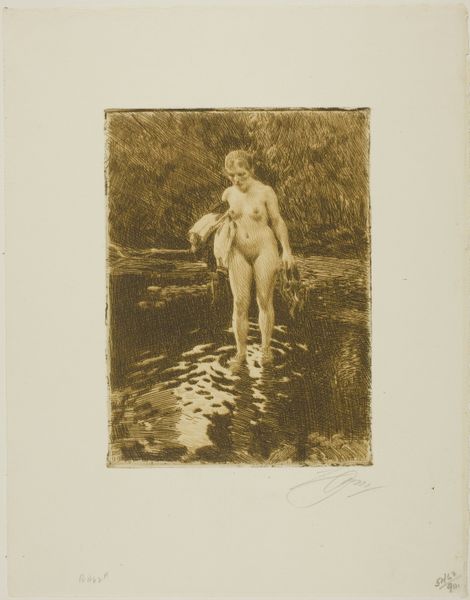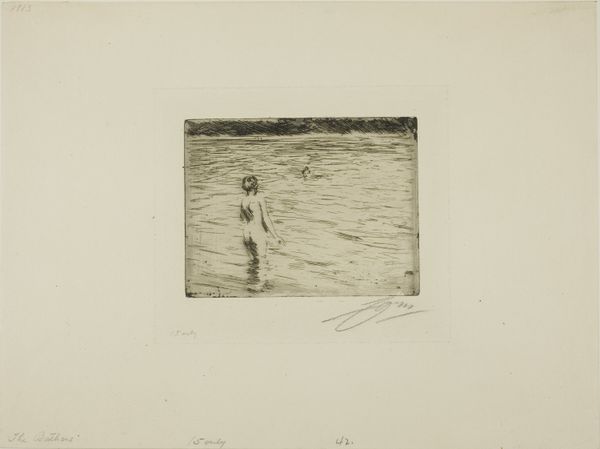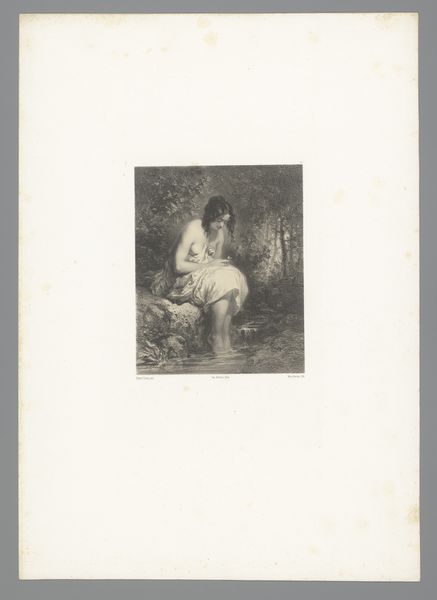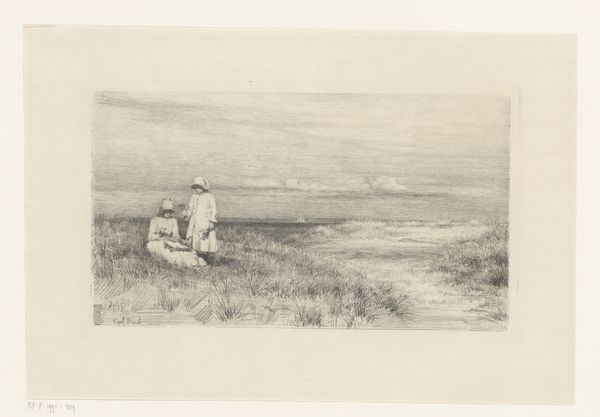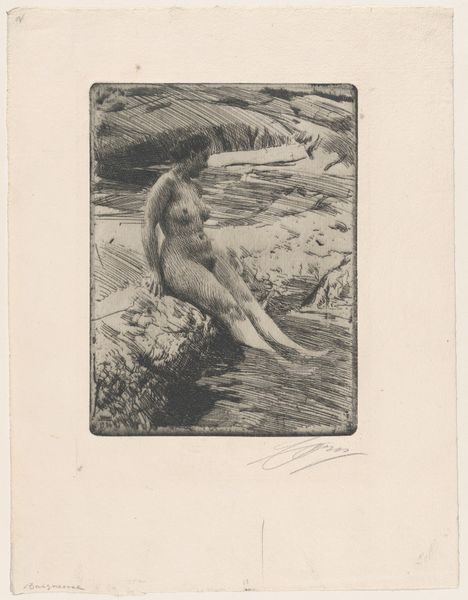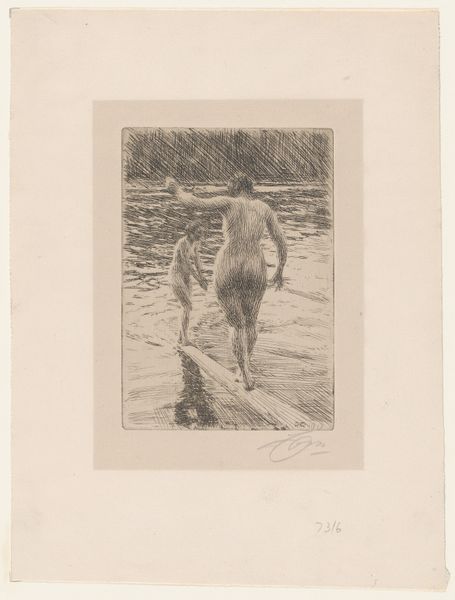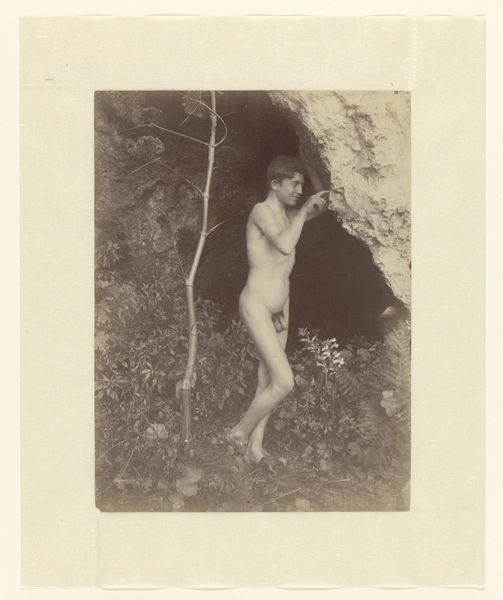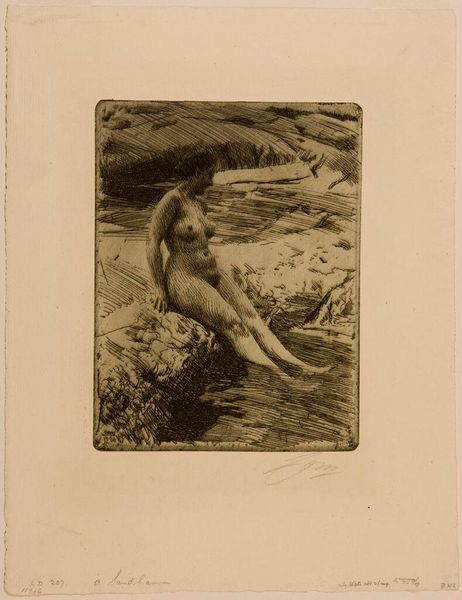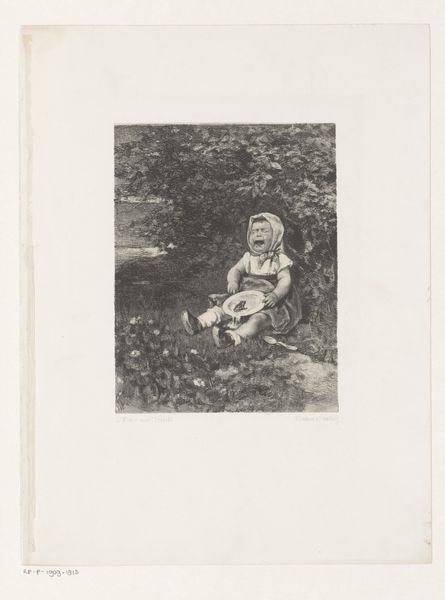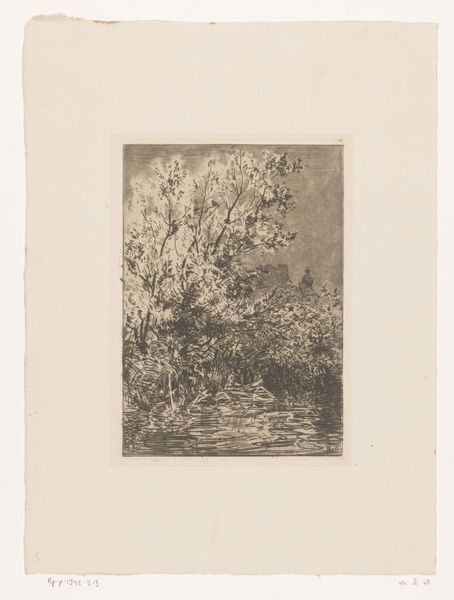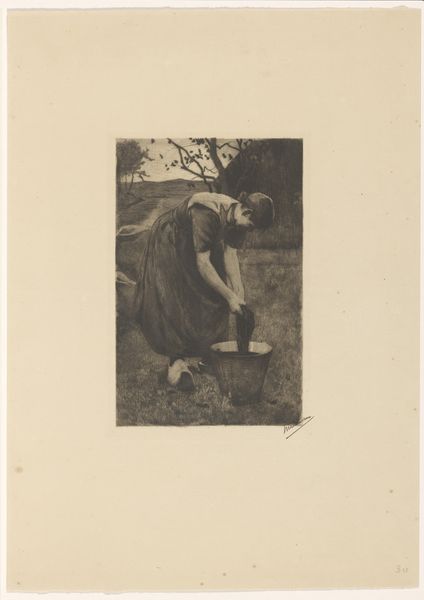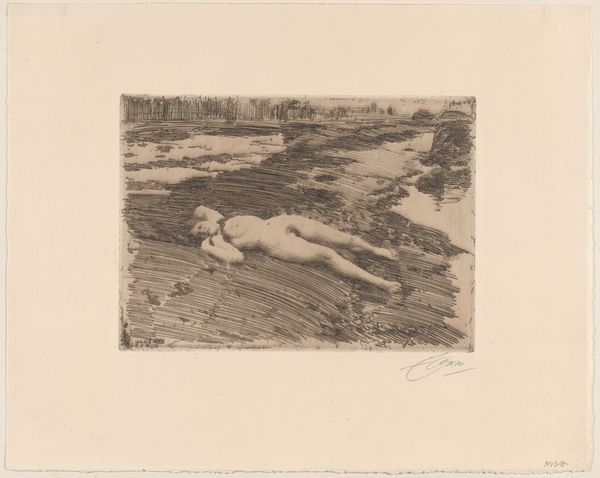
Dimensions: Plate: 9 3/4 in. × 7 in. (24.8 × 17.8 cm) Sheet: 16 9/16 × 14 1/16 in. (42 × 35.7 cm)
Copyright: Public Domain
Curator: Anders Zorn’s 1912 etching, titled “Dagmar,” captures a figure poised between water and land. Editor: My immediate impression is one of wistful contemplation, emphasized by the somber monochrome and the density of the etching. It almost feels like peering into a forgotten memory. Curator: The power lies precisely in how Zorn manipulates line and shadow. The varying densities of etched lines create not just form but also atmospheric perspective. Look closely at how the light seems to reflect and dance off the water's surface, a masterful rendering using purely linear means. Editor: It’s true; that stark contrast really pulls your focus. Is there a historical context to consider when we're observing this figure of Dagmar, almost certainly an Eve figure sitting on a rock at the edge of Paradise? Curator: While explicitly religious iconography may be absent, the etching nods to broader art historical conventions concerning the female nude within a natural setting. Zorn was undoubtedly aware of the legacy of representing women this way and would not object if someone saw her likeness there. Editor: Right, a clear continuity is discernible between Zorn's “Dagmar” and earlier symbolist and even romantic representations of women in nature. But it's Zorn's distinctive approach to etching, isn’t it, that makes it something very unique. Curator: Precisely, it is how he renders form using the graphic qualities of the etched line to produce a very contemporary vision. And how form creates feeling: Dagmar’s gaze downward, that sense of internal meditation conveyed by the angling of her body in relationship to the horizontal thrust of the waterline, speaks to our most immediate perceptions. Editor: Understanding both the continuity and the formal innovations enriches our encounter with this subtle and evocative etching. Curator: Absolutely. “Dagmar” invites contemplation on the legacy of image making and formal invention and how visual forms themselves become meaningful over time.
Comments
No comments
Be the first to comment and join the conversation on the ultimate creative platform.
